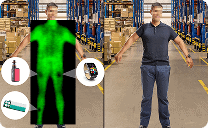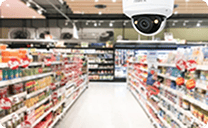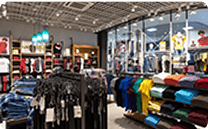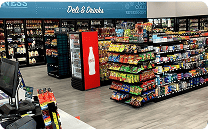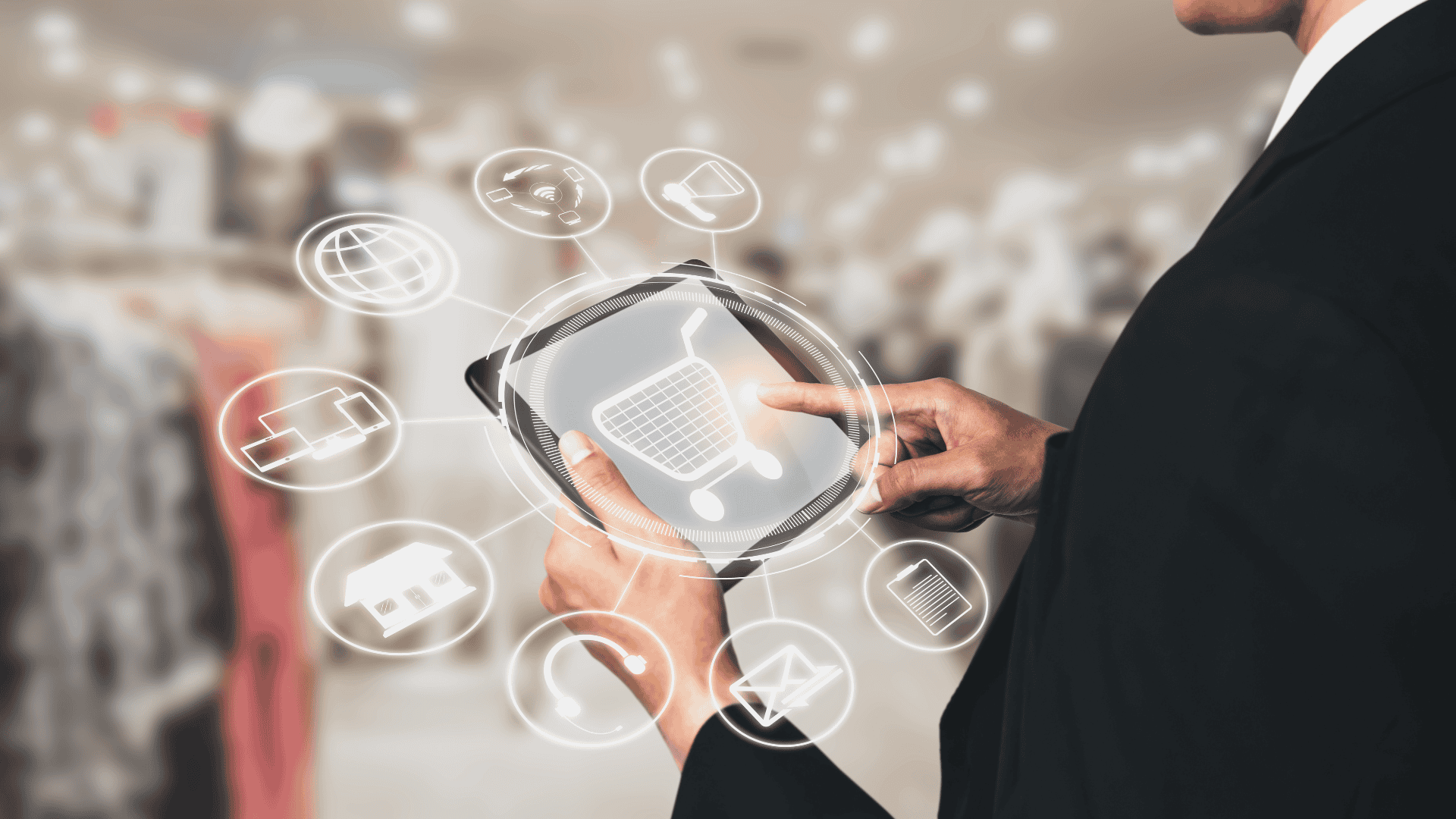In This article
Introduction: The Age of AI-Driven Retail Safety
According to the National Retail Federation’s 2023 Retail Security Survey, organized retail crime (ORC) costs retailers a staggering $112 billion annually. The escalating number, sophistication, and cost of data breaches, along with rising employee injury claims, underscore the urgent need for retailers to prioritize the safety of their customers, employees, and assets.
With the evolution of theft, cybersecurity threats, and workplace accidents, it’s becoming increasingly clear that traditional safety protocols are no longer sufficient. In response, many U.S. retailers are actively seeking, discovering, and implementing cutting-edge technologies that offer smarter, faster, and more predictive protection. At the forefront of this transformation is an integrated approach that combines artificial intelligence (AI) with modern hardware and software systems– AI-powered retail safety.
AI offers the predictive power, automation, and responsiveness needed to meet modern threats head-on. AI can also help to reduce risks and improve response times. This article details how challenges to retail safety are evolving and how AI is helping to address them effectively. The piece also offers steps to put AI to work, increasing safety for your customers and your business.
Current Challenges in Retail Safety
Retail safety professionals face multiple simultaneous challenges to their protection efforts.
- Shoplifting and ORC: Theft remains a persistent issue, with criminals becoming more organized and technology-savvy.
- Cybersecurity Risks: The rise of e-commerce and omnichannel customer journeys increases the attack surface for malefactors who attempt data breaches, phishing scams, and ransomware threats.
- Workplace Injuries: Slips, trips, and ergonomic injuries are common in stores and warehouses, often due to poor training or lack of effective safety monitoring.
- Emergency Preparedness: Many retailers struggle to respond calmly, quickly, and effectively to fires, natural disasters, active shooter incidents, or other crises.
Traditional approaches, such as security guards, CCTV, and manual incident reporting, lack sufficient scalability and real-time insights to help you prevent or respond to these risks effectively. You need newer, better tools.
AI-Powered Technologies: A Revolution in Retail Safety
AI is changing the retail safety game by enabling real-time monitoring, behavior prediction, automated intervention, and other functions not possible with traditional solutions. Key innovations include the following.
AI-Driven Surveillance and Facial Recognition
Modern AI-enhanced CCTV systems can do much more than record footage. Walmart, for example, has implemented AI-powered video analytics across many locations to monitor point-of-sale activity, detect under-scanning, and reduce shrinkage. AI offers other benefits as well.
- AI can detect suspicious behaviors such as loitering, rapid movement, or item concealment.
- AI-powered facial recognition can identify known shoplifters (where legally permissible).
- AI technologies can alert staff automatically when predefined anomalies are detected.
- AI can make searching through archived recordings faster, easier, and more accurate.
Internet of Things (IoT) Sensors for Physical Safety
IoT-enabled devices such as smart shelves, motion detectors, and temperature sensors can enhance retail safety in multiple ways.
- Motion sensors can monitor and report on customer traffic levels to prevent overcrowding.
- IoT-powered environment sensors can detect and flag spills, blocked fire exits, or other unsafe conditions.
- IoT-connected systems can send real-time alerts when events such as refrigeration failures cross safety thresholds.
Predictive Analytics for Theft and Safety Incidents
AI-powered solutions can use their underlying machine learning models to analyze historical sales and incident data. Those analyses can deliver multiple benefits to your business.
- Predict peak theft times or high-risk products.
- Identify in-store design or staffing level vulnerabilities.
- Discover opportunities to improve store layout, staff scheduling, and security.
AI and Employee Training for Retail Safety
Your people remain your most valuable asset—and your greatest vulnerability. Fortunately, AI is also improving staff training on retail safety protocols.
- Interactive Training: Tools like AI-powered virtual reality (VR) and augmented reality (AR) simulations enable immersive learning experiences for fire drills, evacuation routes, or theft scenarios.
- Adaptive Learning: AI platforms can assess employee performance and adapt content based on real-time progress, for better engagement and content retention.
According to training, safety management, and compliance solutions provider HSI, companies that adopt immersive training improve knowledge retention by more than 75% compared to traditional methods.
Cybersecurity in Retail: The AI Shield
Amazon uses AI to monitor its vast retail ecosystem for fraud, protecting millions of customer accounts daily. As retail becomes more digital, your retail safety efforts must also extend into cyberspace. AI can support those efforts in multiple ways.
- Behavioral Analysis: AI technologies can monitor user and device behavior to detect anomalies, such as unauthorized access or unusual payment patterns.
- Threat Detection and Response: AI engines can identify, flag, and isolate malware, phishing attempts, or account takeovers before damage occurs.
- Fraud Prevention: Machine learning algorithms flag unusual transaction patterns to combat payment fraud and loyalty program abuse.
AI in Crisis Management
In a crisis such as an active shooter episode or gas leak, seconds count. AI-powered systems can significantly enhance retail safety by providing life-saving speed and coordination, reducing response time and confusion.
- Real-Time Alerts: AI-integrated alarm systems automatically detect fires, smoke, or intrusions and notify emergency services and key personnel.
- Crowd Flow Management: AI can analyze live video to detect panic movement or identify crowd bottlenecks, which can prevent stampedes or injuries.
- Crisis Communication: AI chatbots and automated text/email systems can simultaneously push emergency messages to customers and staff.
Cost and ROI of Implementing AI Solutions
Adopting AI technologies can seem cost-prohibitive, especially for small to mid-sized retailers. Initial investments may range from $50,000 to $250,000, depending on the store size and breadth of the chosen technology stack. However, many retailers report a full ROI within 18 to 24 months, thanks to the value of AI’s multiple benefits.
- Theft Reduction: AI surveillance can cut shrinkage by 20–40%, translating into millions in recovered revenue.
- Fewer Workplace Incidents: Improved training and monitoring reduce injury-related costs, including lost productivity, compensation, and legal fees.
- Insurance Premiums: Demonstrating advanced safety protocols can lower insurance costs.
Case Studies: AI Success Stories in Retail Safety
1. Lowe’s – Computer Vision for Hazard Detection
Lowe’s implemented AI vision systems to detect floor hazards like spilled liquids or dropped tools. By alerting staff about such events in real time, they cut slip-and-fall incidents by over 60% within six months.
2. CVS Health – AI for Inventory and Loss Prevention
CVS uses AI to track anomalies in inventory movement and checkout data, enabling targeted investigations. This has reduced internal theft by as much as 70% in select locations.
3. The Home Depot – AI-Driven Training
The Home Depot partnered with an AI vendor to develop interactive training on warehouse safety. As a result, training completion rates jumped 90%, and injury claims dropped by 25% year-over-year.
Preparing for the Future: What’s Next in AI and Retail Safety
As AI continues to evolve and mature, new technologies are on the horizon that will further enhance retail safety. Tracking these innovations now will help you prepare to handle future safety risks with speed and intelligence.
- Edge Computing/Quantum Computing: These technologies will enable AI solutions to run on local, premise-based servers and systems, for faster response times and fewer cloud latency issues.
- Federated Learning: AI systems that can learn from multiple, decentralized data sources while preserving privacy will enable safer, more comprehensive collaboration between retailers.
- Emotion Recognition: Emerging AI can read facial micro-expressions to detect customers’ or employees’ happiness, stress, or aggression.
Actionable Steps for Retailers
Here are specific steps to help you implement an effective, AI-powered retail safety program.
Step 1: Conduct a Safety Audit
- Identify current gaps in physical, digital, and emergency preparedness.
- Use employee feedback, incident reports, and CCTV reviews.
Step 2: Define Safety Objectives
- Identify and prioritize your top safety concerns, including theft, cyber threats, and employee or customer injuries.
- Set measurable key performance indicators (KPIs) and desired levels. Examples include reduction in incidents, training completion rates, and response times.
Step 3: Choose the Right AI Tools
- For surveillance, look for vendors offering real-time video analytics with facial and object recognition.
- For training, consider e-learning platforms with integrated, AI-powered VR/AR features.
- For cybersecurity, use AI-enhanced endpoint protection and fraud monitoring.
Step 4: Partner with Trusted Vendors
- Choose partners with experience in retail safety and transparent AI governance.
- Review vendor compliance with privacy regulations such as the California Consumer Protection Act (CCPA) and the General Data Protection Regulation (GDPR), which applies to all European Union (EU) citizens wherever they are.
- Explore experienced service providers and consultants for alternatives to solutions that exceed your available capital expenditures budget or local technical expertise.
Step 5: Train and Monitor Continuously
- Train staff contextually so they learn to use new systems and understand their roles in overall safety efforts.
- Regularly update AI systems with new, validated data to improve accuracy and relevance.
Conclusion
AI is not just “the future.” It offers real opportunities to revolutionize retail safety today. From theft prevention to workplace training and cybersecurity, AI offers a comprehensive, scalable approach to modern risk management. As technology evolves, so will retailers’ capacity to protect people, data, and profits. Those who act now will lead the next generation of safe, smart retail environments. DTiQ’s intelligent solutions empower businesses to reduce loss, increase revenue, and boost profits. To learn more, visit our website.
Frequently Asked Questions
Q: Is AI surveillance legal in all U.S. states?
A: Facial recognition and AI surveillance laws vary by state. Retailers should consult legal counsel and ensure compliance with local regulations.
Q: How can small retailers afford AI technology?
A: Many vendors offer modular, cloud-based AI solutions with low upfront costs. Grants and tax incentives may also be available for safety investments.
Q: How is AI different from traditional surveillance systems?
A: Traditional systems rely on manual review. AI systems proactively analyze footage in real time and automatically alert staff to incidents.
Q: Can AI replace human staff in safety roles?
A: No. AI is a tool to augment human judgment and efficiency, not replace staff. It enhances their ability to monitor, respond, and train effectively.
Q: What metrics should be used to evaluate AI’s impact on safety?
A: Consider reduction in incidents, theft shrinkage, training completion rates, and customer satisfaction scores related to perceived safety.
